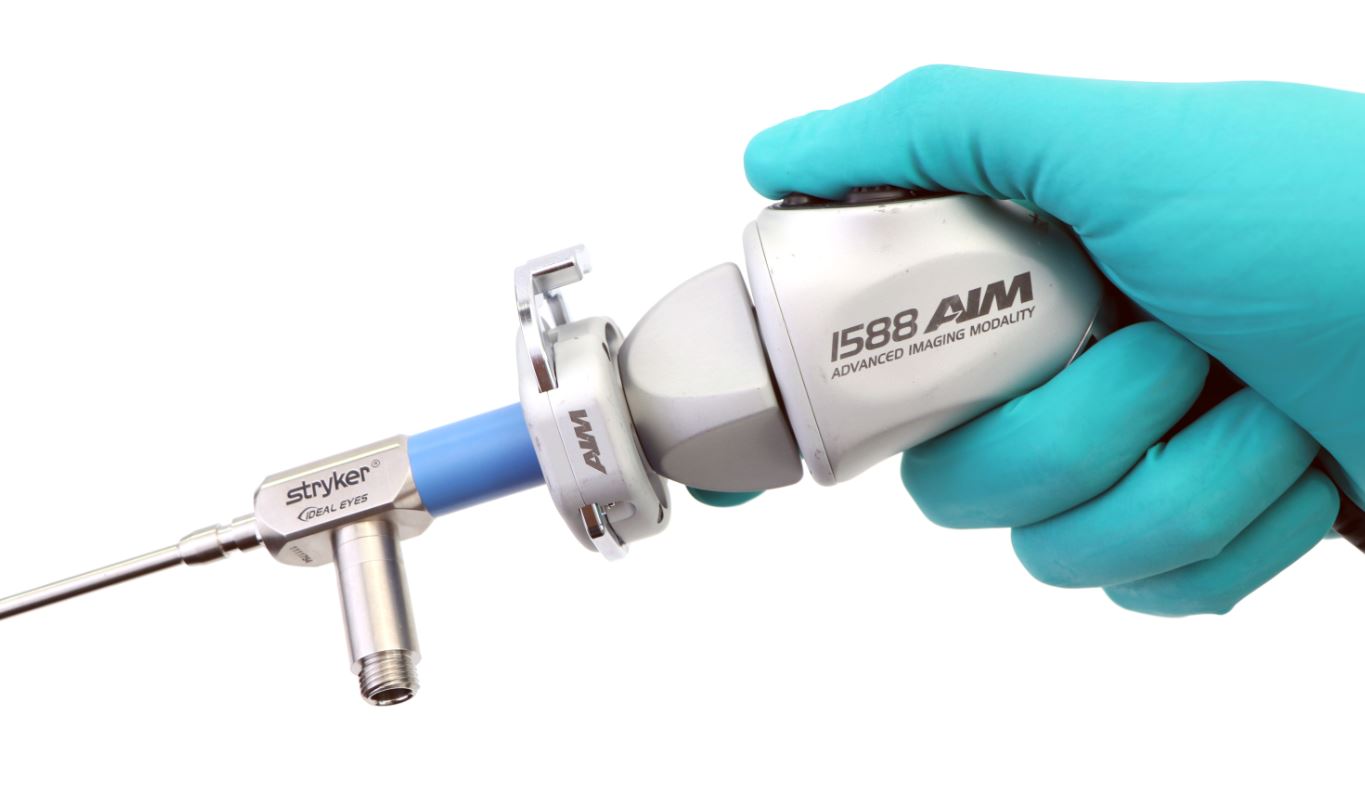
Before deciding which camera head to use, determining the preference of scope type is necessary, which will usually be determined by procedure type. Commonly used in the 9 different surgical specialties, traditional eyepiece scopes are more commonly used while C-Mount scopes are primarily used in arthroscopy.
C-Mount scopes, also called Direct View scopes, create a contained environment from the scope directly to the camera head using an O-ring. This prevents water from entering view during suction irrigation. When using a coupler in arthroscopy, because of suction irrigation, water may come between the scope and the coupler. This can create a fog or distortions in the image, making it more difficult for a surgeon. Surgeons cannot fix what they cannot see. Because of this, a surgeon may have to wipe down the eyepiece of the scope and the camera head throughout the procedure. This can extend surgeries throughout the course of the day. Even though this is a possibility, eyepiece scopes are still a perfectly good option and common one used during arthroscopy. Eyepieces scopes are more universal, as they are compatible with multiple manufacturer camera heads across different specialties.
It comes down to preference. Even though C-Mount scopes used in arthroscopy help prevent water from reaching the eyepiece and camera head, some arthroscopic surgeons prefer an eyepiece scope and do not mind wiping the equipment throughout the procedure. It may take a little longer to complete, but again, it is their preference.
C-Mount Camera Heads and C-Mount Scopes

- Commonly used in arthroscopy with C-Mount Arthroscopes—contain an O-Ring
- Replacement of O-Ring required—replacement based on how much the scope is used and sterilization process. Autoclaving or gas sterilization will have more wear and tear on an O-Ring.
- Used in Laparoscopy and other specialties, a C-Mount camera head requires a compatible coupler and eyepiece scope.
- Using a coupler allows you to use different scopes—laparoscopes, eyepiece arthroscopes, hysteroscopes, ureteroscopes and more.
- One connection point when using a C-Mount Camera Head and C-Mount Scope.
- Prevents condensation during irrigation of arthroscopy.
- C-Mount Camera Head and coupler=two connection points. Possibility of condensation build up during surgery.
- Surgeon will have to keep wiping the eyepiece and camera head during the procedure resulting in a longer surgery.
Integrated Camera Heads and Eyepiece Scopes

- No coupler needed! Not necessary to purchase another component.
- Used with eyepiece scopes. One connection point prevents multiple condensation points during procedures. Easy removal and connecting another scope during surgery.
- Compatible with different eyepiece scopes from different manufacturers.
- Sterilization of one product (coupler and camera head at the same time)
- Cannot use C-Mount Scopes with integrated camera heads.
Your Preference
It is important to remember there are options when it comes to picking camera heads and types of scopes. Some surgeons prefer eyepiece, while some arthroscopic surgeons like C-Mount scopes. It is the same when it comes to camera heads. Sterilization of one product and the purchase of a single product is enticing to some doctors, while others prefer using couplers with C-Mount camera heads.
